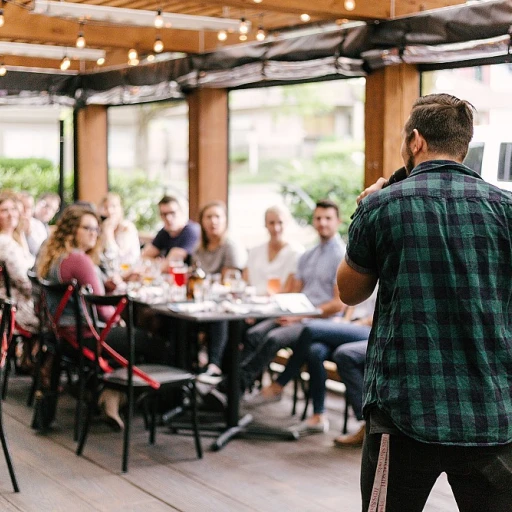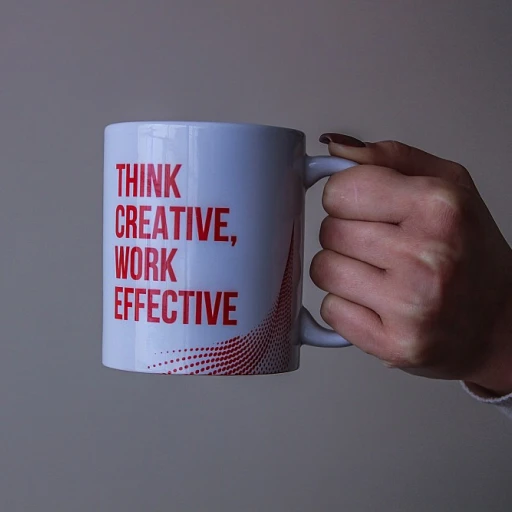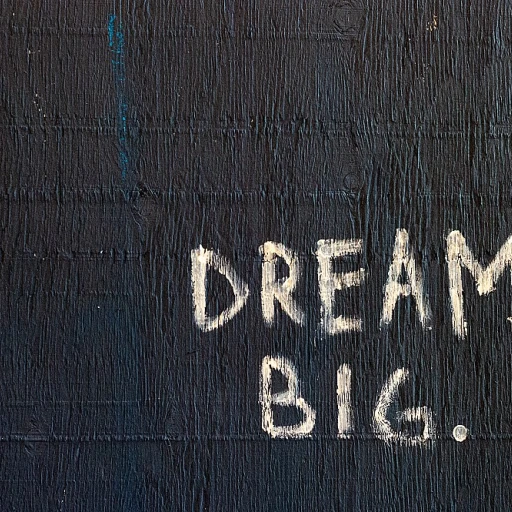
The Role of Sponsorship Levels in Corporate Culture
Exploring Sponsorship Dynamics in Corporate Culture
The role of sponsorship levels in corporate culture is multifaceted, serving as a pivotal element in the strategic promotion and financial structuring of organizations. Companies leverage sponsorships, through corporate or nonprofit entities, to enhance their visibility in various events and programs. These sponsorship levels are vital in shaping how businesses interact with their stakeholders, clients, and potential sponsors. By consolidating such relationships, companies can enjoy substantial benefits, ranging from increased brand recognition to fostering long-term partnerships.
Corporations are keen on creating clear sponsorship packages to differentiate the tiers offered to their sponsors. These packages generally encompass details such as the logo event display, benefits like exclusive event tickets, and a host of other tailored opportunities. Sponsors will likely receive tiered benefits based on their level of contribution, ensuring a mutually beneficial relationship is maintained. The customization of sponsorship tiers allows for tailored brand exposure and engagement, aligning sponsor values with those of the hosting company. This strategic alignment is a crucial factor in solidifying the relationship between sponsors and the organization.
Common Sponsorship Level Names and Their Meanings
Decoding Sponsorship Tiers: From Gold to Bronze
Understanding the nuances of sponsorship level names is crucial for effectively engaging with potential sponsors at events. Sponsor levels often use a tiered naming convention, such as Gold, Silver, and Bronze, which not only reflects the financial contribution but also the associated benefits a company or individual will receive.
These sponsorship level names create a hierarchy of engagement and visibility for sponsors. A Gold sponsor, for example, might have their company logo prominently featured on event materials, including banners and tickets. They could also receive more tickets for the event itself and be mentioned more frequently in social media posts related to the event.
These benefits could diminish as you move down to tiers like Silver and Bronze, with Bronze sponsors typically receiving lesser brand visibility. Even within the same event sponsorship, companies might find the standard tier names insufficient for describing the unique opportunities and benefits in their offerings, prompting customization to better suit their nonprofit or corporate needs.
Sponsorship packages named after precious metals or other valued items often resonate well, as they evoke a sense of prestige and exclusivity which many potential sponsors find attractive. The concept also extends to creative ideas, such as naming tiers after corporate culture values or community impact objectives, which can be especially appealing for nonprofit sponsorship.
It is important for organizations to clearly define what sponsors can expect at each level. This might include understanding how their logo will be displayed or how many events they're highlighted in. By tailoring level names to align with the event's ethos and the target audience’s interests, companies can enhance engagement and ultimately, retention of sponsors.
Furthermore, ensuring brand compliance within these ventures can create consistency and trust, amplifying the effectiveness of your sponsorship program. For more on this, consider exploring insights on ensuring brand compliance in corporate culture.
Impact on Stakeholder Relationships
Strengthening Connections Through Strategic Engagement
Incorporating sponsorship levels within corporate culture impacts stakeholder relationships significantly. By meticulously defining sponsorship levels, companies not only enhance their visibility but also solidify their ties within their community and industry. The choice of sponsorship level names and the benefits associated with each tier play pivotal roles in how stakeholders, including potential sponsors and event attendees, perceive the company.- Building Brand Image: Sponsorship packages that prominently feature the company logo, or even include the company logo on social media or at an event, enhance recognition and trust among stakeholders. This prominent visibility reinforces the company’s commitment to its community and industry, fostering positive associations.
- Custom Tailored Engagement: Offering benefits at different sponsorship level names allows for customization, enabling companies to cater to the unique needs and interests of diverse sponsors. Event sponsors appreciate having options that align with their marketing strategies, creating more meaningful and lasting engagement.
- Nurturing Long-Term Partnerships: When companies create sponsorship tiers that offer meaningful benefits, such as exclusive access or premium logo placement, they cultivate loyalty among sponsors. Such loyalty fosters long-term partnerships that evolve beyond one-time events, translating into sustained corporate success.
Customizing Sponsorship Levels for Your Organization
Tailoring Sponsorship Levels to Fit Your Organization
Customizing sponsorship levels is a strategic move that can significantly enhance the effectiveness of your sponsorship program. By aligning sponsorship packages with your organization's goals and the interests of potential sponsors, you create a win-win situation that benefits both parties.
Here are some key considerations when customizing sponsorship levels:
- Understand Your Audience: Knowing who your potential sponsors are is crucial. Are they local businesses, large corporations, or nonprofits? Understanding their needs and expectations will help you tailor your sponsorship packages effectively.
- Define Clear Benefits: Clearly outline what sponsors will receive at each level. This could include having their company logo displayed prominently at events, mentions on social media, or tickets to the event. The more specific and attractive the benefits, the more likely sponsors will be interested.
- Flexible Packages: Offer flexibility in your sponsorship packages. Allow sponsors to choose from a variety of options, such as different tiers or custom packages that align with their marketing goals.
- Creative Naming: The names of your sponsorship levels can also play a role in attracting sponsors. Creative and meaningful names can add value and prestige to each level, making them more appealing.
- Feedback Loop: Establish a feedback loop with your sponsors. This will help you understand what works and what doesn’t, allowing you to refine your sponsorship levels over time.
By focusing on these elements, you can create sponsorship levels that not only meet the needs of your organization but also provide real value to your sponsors. This approach fosters stronger relationships and encourages long-term partnerships.
Challenges in Defining Sponsorship Levels
Overcoming Obstacles in Sponsorship Level Identification
Defining sponsorship levels within an organization can be a complex challenge, yet it is critical for effectively attracting potential sponsors and ensuring the success of sponsorship programs. One primary difficulty stems from the need to align sponsorship packages with the strategic goals of the event and the organization. Companies must carefully craft their sponsorship levels to create appealing offers for potential sponsors while ensuring these align with their brand values and objectives. Another challenge involves striking the right balance between value and benefits. While offering valuable incentives—such as event tickets, the sponsor's logo prominently displayed or featured in various media, or tailored sponsorship packages—can entice event sponsors, there is a delicate line between under- and over-valuing these benefits. Organizations must adeptly price and package these benefits, ensuring each sponsorship tier presents a compelling reason for investment without overwhelming the sponsors. Moreover, the ever-evolving nature of corporate cultures and market trends presents difficulties in keeping sponsorship level names and packages relevant. As events and industries change, so too must the ways companies communicate the offerings of sponsorships. This involves creativity and flexibility, adapting names and the structure of offerings in response to changes in the nonprofit and corporate sponsorship landscapes. In addition to these internal challenges, external factors can complicate the sponsorship process. Event sponsors may have different expectations based on their industry standards and previous experiences. Sponsors will likely compare what one organization's sponsorship program offers against the market's offerings, further making it necessary for companies to stay informed about what's trending in sponsorship levels and logo representation opportunities. Ultimately, the precise definition of sponsorship levels requires ongoing attention and a proactive approach, tailoring solutions to both the company's ethos and the shifting needs of potential sponsors.Future Trends in Sponsorship Level Naming
Emerging Trends in Naming Sponsorship Levels
As corporate culture evolves, the naming conventions for sponsorship levels are beginning to reflect broader changes in organizational values and practices. Companies are increasingly looking to not only attract event sponsors but also enhance the partnership experience by aligning sponsorship tier names with their strategic objectives and core values. By doing so, businesses can effectively communicate the benefits and commitments associated with each sponsorship package. Some potential trends include:- Personalization and Customization: As highlighted earlier, customizing sponsorship levels for unique organizational contexts remains vital. This personalization allows companies to create sponsorship packages that are not only appealing to potential sponsors but also reflective of the organization's own mission and values. This trend is particularly significant for nonprofits where the alignment of values is crucial.
- Emphasis on Inclusivity and Sustainability: With a growing emphasis on inclusivity and sustainability in business practices, sponsorship levels are being named to reflect these principles. Sponsors will find names like "Green Pioneer" or "Inclusive Innovator" that explicitly connect the level of sponsorship to sustainability initiatives or diversity efforts.
- Digital Engagement Focus: In line with the rising importance of digital media, sponsorship level names are beginning to emphasize social media presence and digital engagement. Sponsors whose company logo is featured prominently in digital campaigns or whose names frequently appear in social media mentions may receive a distinct designation such as "Digital Champion."
- Experience-Based Tiers: Instead of traditional tiers based solely on monetary contributions, some companies are exploring experience-based sponsorship tiers. These focus on providing unique benefits or experiences, such as exclusive access to events or higher visibility opportunities for sponsors, and are reflected in sponsorship level names such as "Experience Partner" or "Event Trailblazer."













